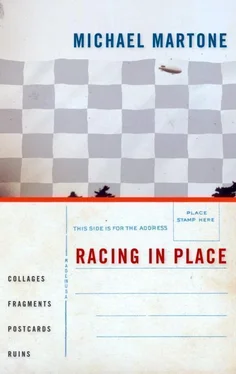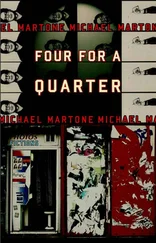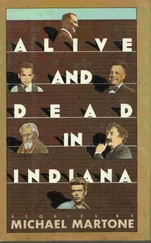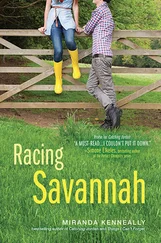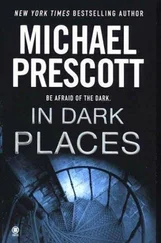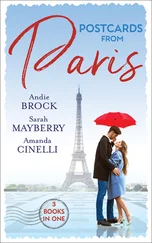E
It was Jack Rohbach who designed the Ronsir frame in 1947, the first frame to combine the wire rims with the plastic ones. At the nexus of midcentury the frames looked both forward and back. Their styling retained the feel of the recently successfully prosecuted war as well as the sensation of the industrial conversion of war production to civilian consumption. That is to say, the glasses' design seemed both serious and delirious. Their style became known as the "Clubman" as other companies-Bausch and Lomb, American Optical-knocked them off. SHURON popped in smoked lenses and called the resulting sunglasses "Escapades." By the mid-1950s half the frames sold in America incorporated the "Clubman" style. SHURON sold the sixteenmillionth pair of Ronsirs on August 6, 1971. Rohbach wasn't a NASA engineer but a vice president at SHURON. They were his glasses but they appealed to engineers. There is a redundancy in the design, a design to their design. They seem to articulate the mantra of the era, the very current hip ethos. Form follows function. Form follows function. These glasses look like glasses. The glasses are all about seeing.
E
When combined in costume with a white button-down shortsleeved shirt and a narrow necktie or bow tie, the glasses in ensemble create a uniform for a type of crazy. I always thought that Edgar Allen Poe's great contribution to dramatic culture was an insanity that seems sane, that stems from rationality in the extreme. Add a flattop haircut to the above accoutrements and you have the recipe for an outfit of that brilliant insanity. It is the look Michael Douglas selects when dressing the part in the movie Falling Down. Logic run amok. The glasses, like the other details of the style, try too hard. They are so sane. It is the artifice of control out of control. They are not, not even in their fake wood or tortoise-shell variety, organic. They are the furthest things from organic. They speak robot, automaton, android, machine. A human so attired is aching to fly apart, to fall down, to stop making sense. The glasses are sensible to the point of senselessness. And the resulting explosion breaks up into all angles and lines-the jazzy cubist, vectors of the atomic age. The design of my glasses holds all its various parts of their construction in place, a very public architecture of tension, compression, gravity, and glue. My glasses are edgy, on the edge, sharp and turning sharper. There is the cliche gesture in the movies of the homely woman taking off her glasses, letting down her hair only to be transformed into a beauty. The glasses usually are the homely making part. Girls who wear glasses… A man puts on these glasses, my glasses, and he puts on the potential for frenzy, the spectacle of the berserk. The spectacles of the berserk, the eyewear of the berserker. The glasses are way too sane. Crazy, man, crazy.
E
Floyd the Barber on The Andy Griffith Show wears my glasses. I don't watch the show, but, occasionally, I will come to rest on it as I flip through the channels. The show has been on the air all my life, and it is on today in reruns on at least four channels to which I have access. The show aired originally during most of the sixties. It was filmed and broadcast in both black and white and color. Floyd the Barber's glasses look best in black and white. Floyd, played by Howard McNear, is constantly startled. The glasses give him an owlish look and, with the white smock he wears, he looks like other goggled practitioners of close work-surgeons, dentists, eye doctors themselves. The lenses distort the eyes, spook them, draw them out. He doesn't blink. The joke is that he never cuts hair but cuts the same hairs over and over. Cut and comb, cut and comb. Then talks to Andy or Barney in the chair. Advancing the plot through talk. His own hair is slicked and shiny, plastic looking, like it's drawn on. The residue of ancient pomade. His hair is an advertisement for hair. His hair, his glasses, his smock, the flatness of the black and white all create the sense that Floyd the Barber has been cut out, a paper doll. The hair, the smock, the glasses have been crimped on, tabs folded tight behind him out of sight.
E
I make love wearing my glasses. I need to see what I am doing when I am making love. So I am completely naked except that I am wearing my glasses. It must be strange to see that. My lover is used to the glasses, perhaps is even clued when in bed I put on my glasses. The glasses and their putting on a kind of foreplay, an erogenous gesture. Still it must be crazy to see me wearing my glasses, naked except for my glasses. I, of course, can't see the glasses I am wearing to see. I see through my glasses. There are moments, when I am making love, when I am imagining I am seeing myself making love, that I am a third party and I am watching and seeing this lovemaking. And watching and seeing this feeds back into the stimulus loop of the fantasy. But the fantasy I am seeing never pictures the glasses I am actually wearing to see. I imagine there are times my lover looking into my eyes is reflected in the lenses of the glasses I am wearing when we make love. My eyes are clouded over by that reflection. My lover's eyes see my lover's lover's eye-a palimpsest, a pentimento. My eyes, my lover's eyes, not really seeing at all.
E
Today in the newspaper on the obituary page is the notice that Samuel C. Sumerlin Jr. has died. A picture accompanies the brief article. Samuel C. Sumerlin Jr. died at seventy-seven though the picture displays a younger man. He is wearing my glasses. The picture is taken in the sunlight out-of-doors. Beneath the lenses he is squinting. The lines of his eyes squinting are solid lines. The glasses seem timeless here. In part we learn that Samuel C. Sumerlin Jr. was known as "Sam, the Bicycle Man." He lived on Queen City Avenue most of his life. He was a friend to many. I am not sure what the glasses can tell us about him. Did he die with his glasses on? Perhaps in the Heritage Hills Nursing Home the glasses on his bedside table were not these glasses. But those who are preparing to remember him or you who have been already remembering him remember him in these glasses, his glasses. I am tempted to visit the viewing. The paper lists the time and place of the viewing but not if it will be an open casket or not. I know from past participation in the viewings of bodies that glasses are a problem. The dead are meant to appear to be sleeping. But one does not sleep in one's glasses. At the same time the dead must look like themselves, themselves sleeping perhaps. But the fixture of glasses makes most people who wear glasses look like themselves. Often there are the telltale marks left by life-long wearing of glasses to be considered if the glasses are not being worn in the coffin. I have helped undertakers attach glasses to the heads of the dead. It looks finally uncomfortable. I like better the folded glasses, folded and tucked in the clasp of the hands folded on the chest. The illusion of a nap. The glasses, with their ability to fold, to contract, have in their collapsing a kind of off/on switch. The glasses too are sleeping, napping, off.
E
People are forgetting that the man who was Colonel Sanders was an actual human being. Harlan Sanders was born in Indiana and in his lifetime turned himself into the cartoon trademark he has become. The white plantation suit, the black string bow tie, the goatee were essential to the transformation. It was, I think, the high contrast of the look. His glasses, my glasses, do the same thing. The black plastic brow and the white metal rim create a smiling aspect. He smiles, a cherubic smile. His eyes smile cherubically. His frames frame all that smiling, replicate the smile and amplify the smiling eyes and the smiling smile. I saw the living Colonel Sanders once at the Hobby Ranch House Restaurant in Fort Wayne, Indiana. The Hobby Ranch House was one of the first independent local restaurants where Colonel Sanders franchised his secret recipe. Later he would sell the concept, and the new company would create their own freestanding shops, the Colonel evolving into the revolving trademark on the side of the revolving bucket sign. When I saw the Colonel in the Hobby Ranch House Restaurant he was standing next to a life-sized posterboard placard of Colonel Sanders. They looked identical but for the depth of one. I remember the glasses. How strange they were in the flesh, dark meat and white, but fleshless too, all plastic and wire. His secret was not the herbs and spices but the use of the pressure cooker to fry the chicken quickly. All of this-the marketing plan, the cooking technology-was new but dressed up, camouflaged as very old and traditional. The glasses are the fulcrum of that moment. The smile now is hard, fixed in print. The glasses disappear into the cloudlike creases of the image's smile, explode in a vapor of Benday dots if you look at it closely and for a long time.
Читать дальше
